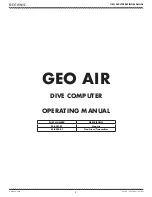
1.6 Theory of Operation
1.6.2 Instrument
Design
Fluidics
The instrument is designed with a fluidics module that transfers liquids to the assay plate
during the kinetic reading.
The fluidics module incorporates an eight-channel pipettor that automatically changes
tips and transfers reagents to the plate that is read in the fluorometer. Pipette height and
dispensing rate are adjustable. The instrument can add reagents within milliseconds of a
column being read, enabling fast kinetic assays of transient responses.
As many as three compounds can be transferred from columns in a compound plate to a
single column in an assay plate, at different points during the total read time.
Automix
The Automix function permits automatic shaking of the microplate at preset intervals,
thereby mixing of the contents within each well. Automix must be selected before
beginning a reading. Automix settings vary with operation mode.
For Endpoint mode, enabling Automix will shake the plate for a definable number of
seconds and then read at all selected wavelengths. When kinetic mode is chosen, two
types of Automix can be enabled: you can set Automix to shake the plate for a definable
number of seconds before the initial reading and/or for a definable number of seconds
before each subsequent reading. Use of Automix is strongly recommended for ELlSA and
other solid-phase, enzyme-mediated reactions to enhance accuracy.
Temperature Regulation
The instrument regulates the temperature of the microplate chamber from 1 °C above
ambient to 45 °C. Upon power up, when the incubator is off, the temperature in the
reading chamber is ambient and isothermal. Turning on the incubator by pressing the
(Incubator) key will cause the instrument to begin warming the reading chamber and the
fluidics module. The temperature set point defaults to 37 °C at start-up. With the
incubator on, the temperature of the reading chamber can be set and regulated from 1
°C above ambient to 45 °C. Accuracy of the temperature set point is only guaranteed if
the set point is at least 1 °C above ambient. If the temperature set point is lower than the
ambient temperature, the chamber temperature will remain at ambient. Temperature
regulation is controlled by heaters only and, therefore, cannot cool the temperature to a
setting lower than ambient.
Temperature regulation and control of the reading chamber is achieved through electric
heaters, a fan, efficient insulation, and temperature sensors. The heaters are located
within the instrument, which is insulated to maintain the temperature set point. The
seven sensors are mounted inside the chamber and measure the air temperature and
chamber temperature. The temperature feedback closed-loop control algorithms measure
the chamber air temperature, compares it to the temperature set point, and use the
difference to calculate the regulation of the heating cycles. This technique results in
accurate, precise control of the reading chamber temperature with a temperature
variation of the air across the entire assay plate of less than 0.5 °C. (Temperature
uniformity within the assay plate itself will depend upon its design, materials, and/or
configuration.)
FlexStation II Operator’s Manual – Rev. D
21
Summary of Contents for FlexStation II
Page 6: ...FlexStation II Operator s Manual Rev D vi ...
Page 92: ...4 Applications 86 FlexStation II Operator s Manual Rev D ...
Page 102: ...5 Service and Maintenance Procedures 96 FlexStation II Operator s Manual Rev D ...
Page 124: ...6 Troubleshooting Procedures 118 FlexStation II Operator s Manual Rev D ...
Page 134: ...7 Appendices 128 FlexStation II Operator s Manual Rev D ...
















































